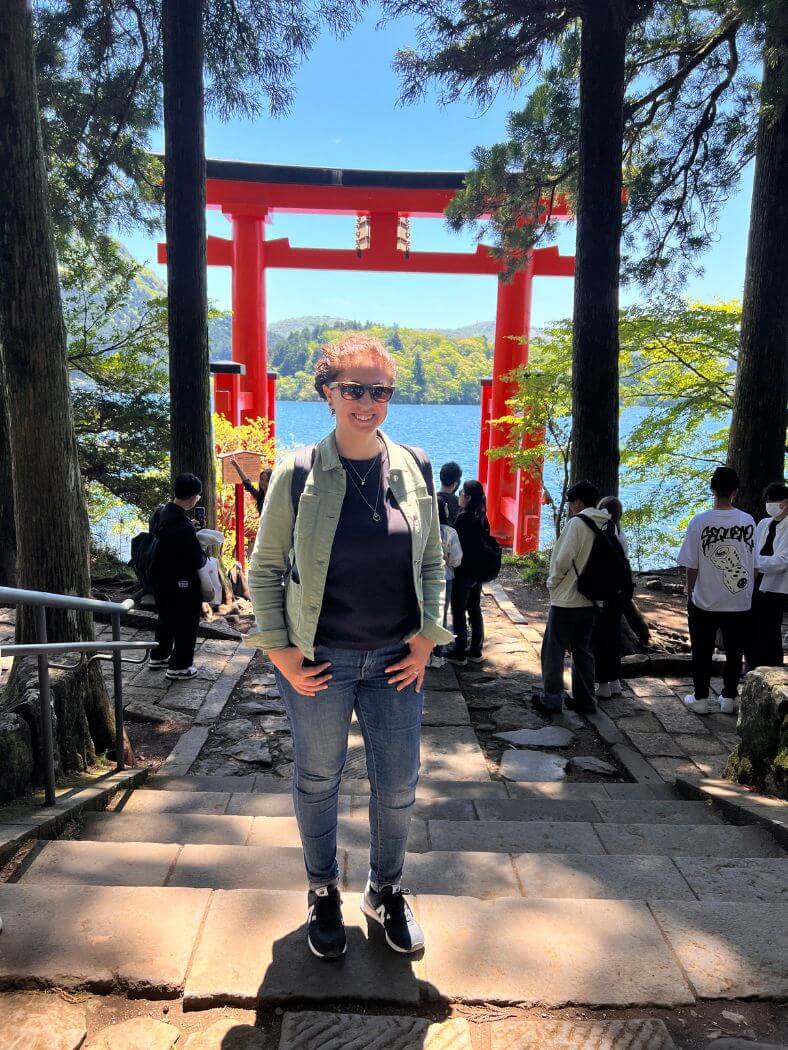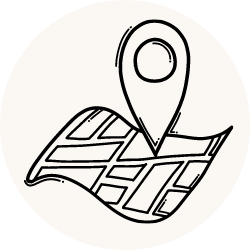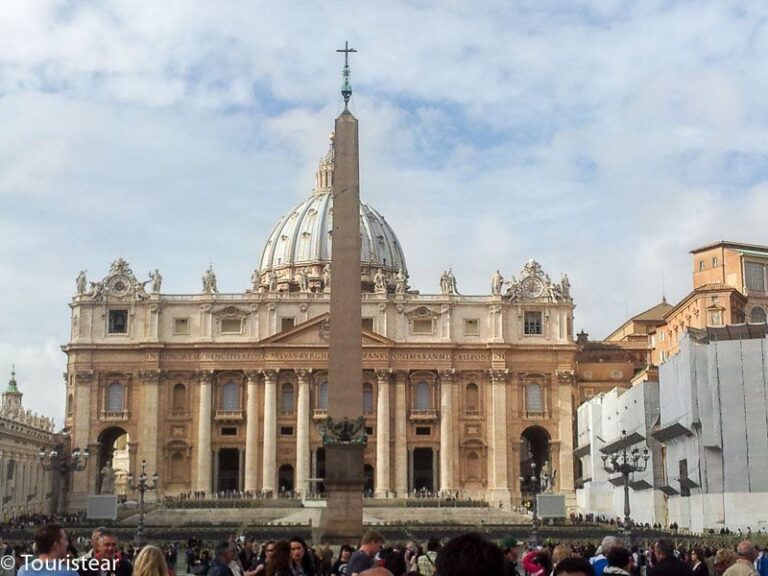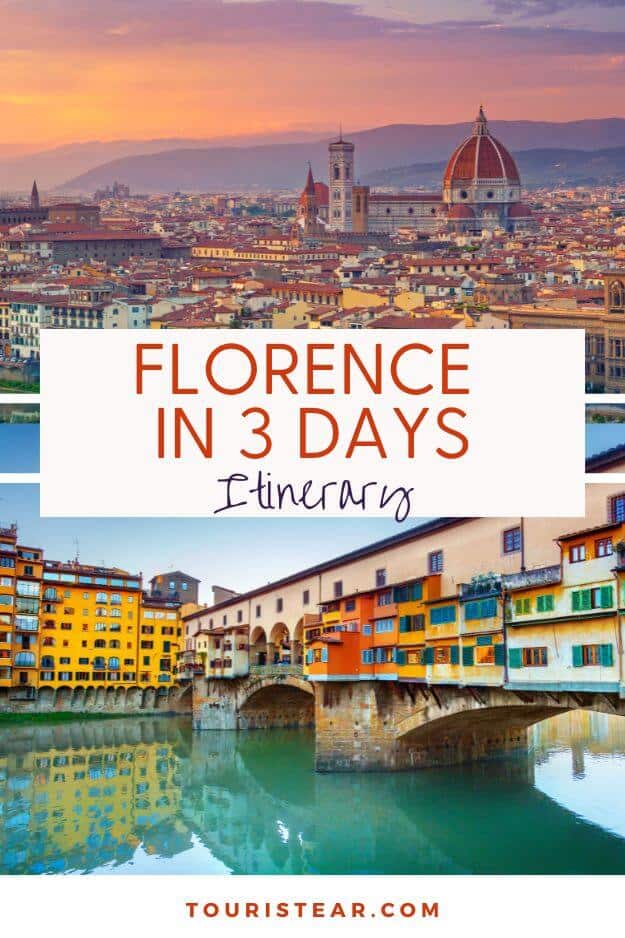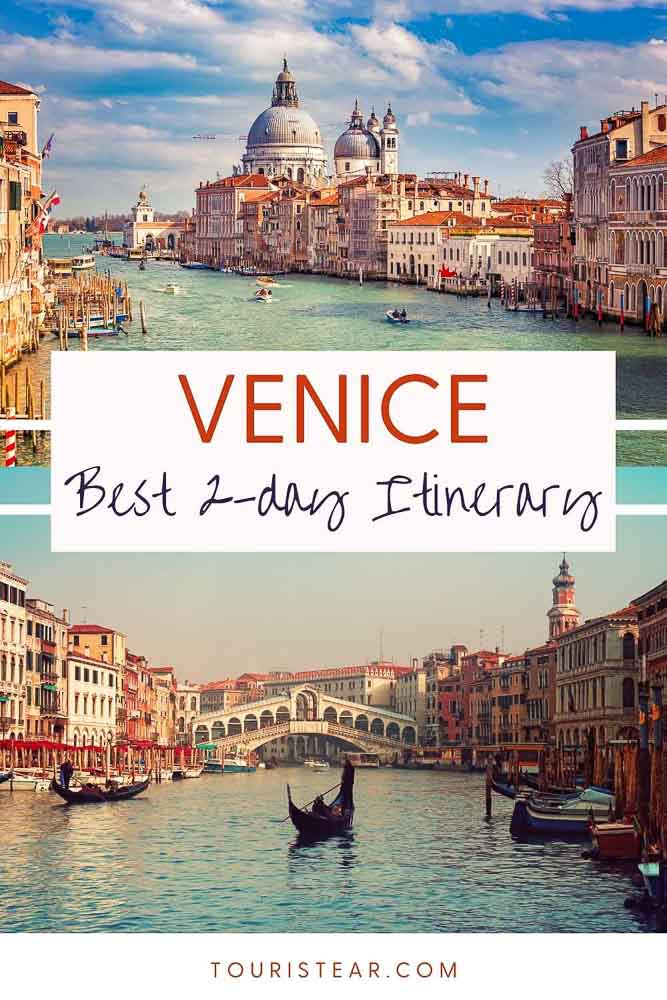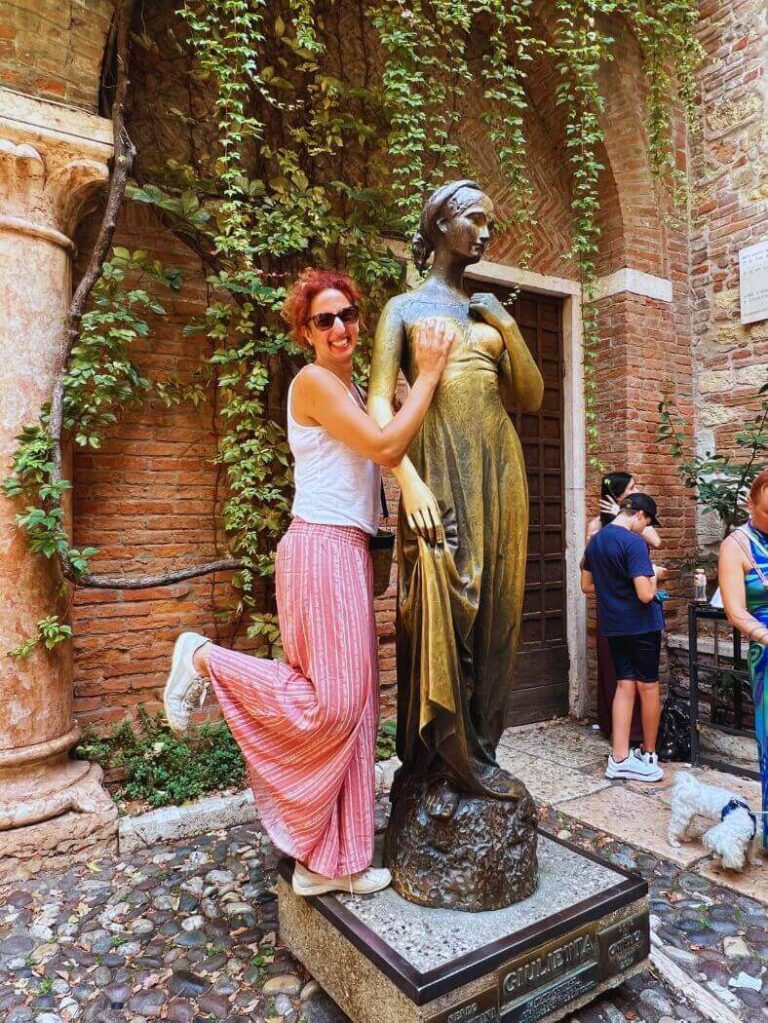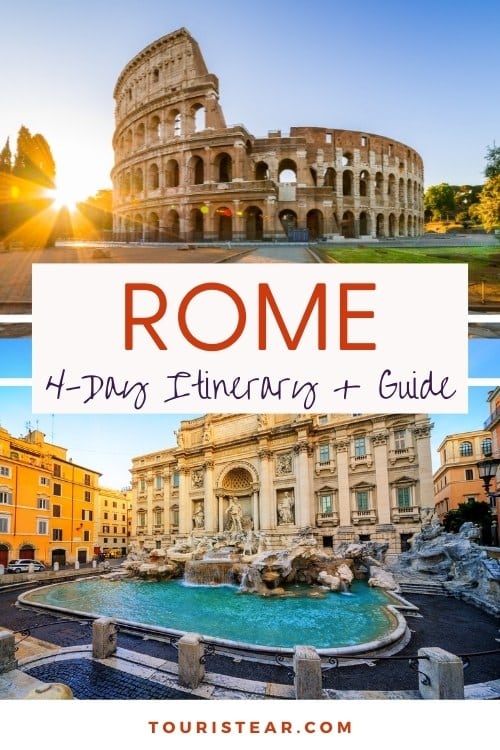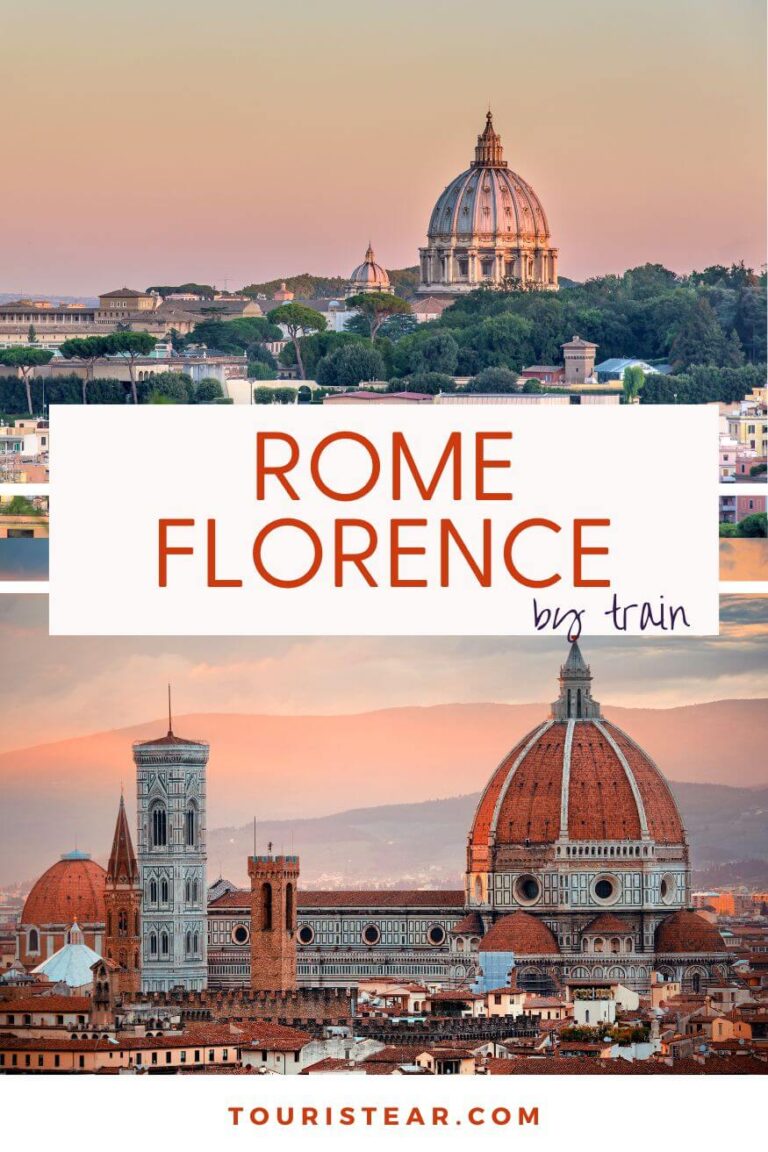75 Best Things to Do in Florence, Italy by Neighborhoods
Florence is a city with so much to offer that it can be hard to know where to start. The best way is just by walking the streets and seeing what catches your eye.
But if you’re looking for something specific, here are 75 things that will make your time in Florence unforgettable!
In this post, I will summarize the things that you can see, visit, and do in Florence. Distributed by neighborhoods or areas of this beautiful Italian city.
- Check out this 3-day itinerary in Florence; click on the link.
What to See in Florence by Neighborhoods or Areas
First, you will start with the political center, then the religious zone, walk through the streets of Dante, visit the Florence of the Medicis, the neighborhood of Santa Croce, and much more. Keep reading!
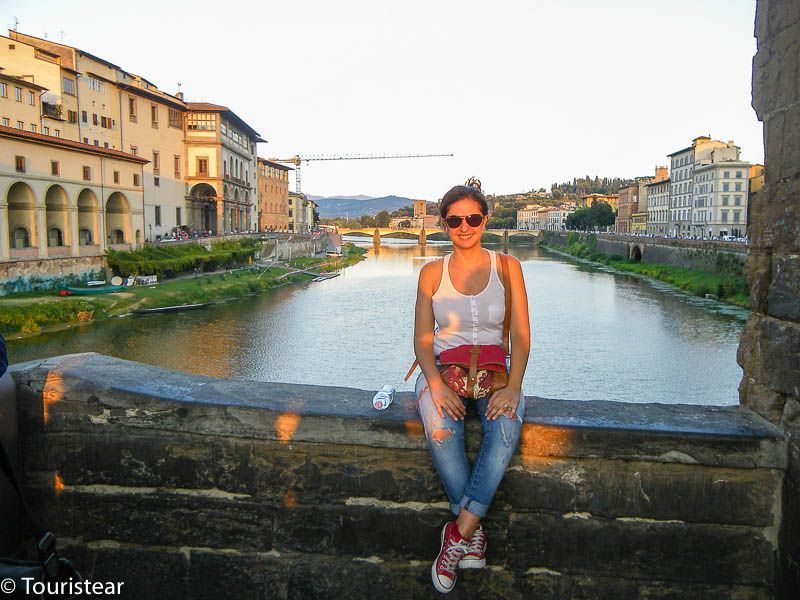
The Political Centre of Florence
1. Republic Square
It is located where the forum was in Roman times, which is at the city center. At the end of the nineteenth century, there was a great reform, and there was practically nothing left of the medieval neighborhood.
Get a cappuccino and enjoy watching the movement of the city.
- Check Out: Florence Food Tour
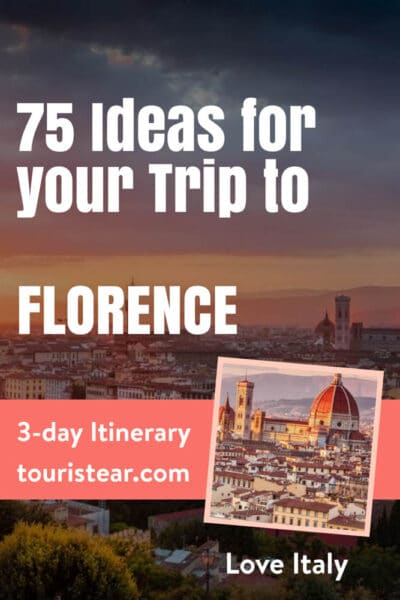
2. Piazza della Signoria
It’s a key point of the city; here, there have been found Roman, and Bronze Age remains. Today, we can see an equestrian monument of Cosme I, Neptune’s fountain, from the mid-16th century.
Pay attention to Palazzo Vecchio; you will see a few sculptures (mostly copies): Marzocco (copy of Donatello’s), Judit and Holofernes (copy of Donatello), the statue of David is also a copy, made by the students of Fine Arts, Hercules and Caco of 1534.
3. Loggia della Signoria
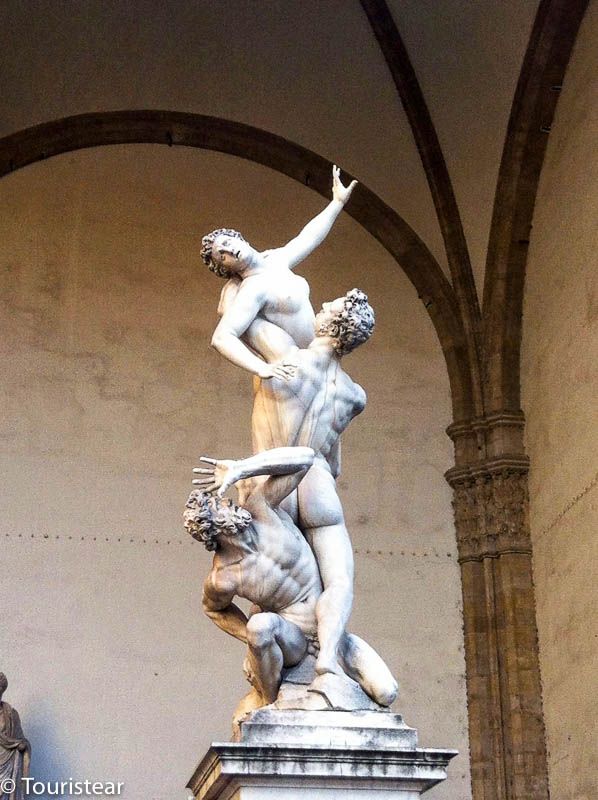
This is where assemblies and public ceremonies in Florence were held. It had several functions until it reached what we see today, a beautiful open-air museum.
4. Enter Palazzo Vecchio
It is the headquarters of the Town Hall; you can visit it, ask to make the secret tour, which you have to book at the ticket office.
Undoubtedly a must on your visit to Florence, the Salone dei Cinquecento is a marvel, and I loved the maps room.
5. Palazzo degli Uffizi
It was built to bring together the thirteen Florentine courts in 1560. Instead, it has been a multifunctional building that has housed the national library, the state archive, etc.
6. Uffizi Gallery
Another must-see in Florence, you can see more than 1,600 works by Italian artists. Of course, the Birth of Venus by Boticelli is a must.
7. The Ponte Vecchio
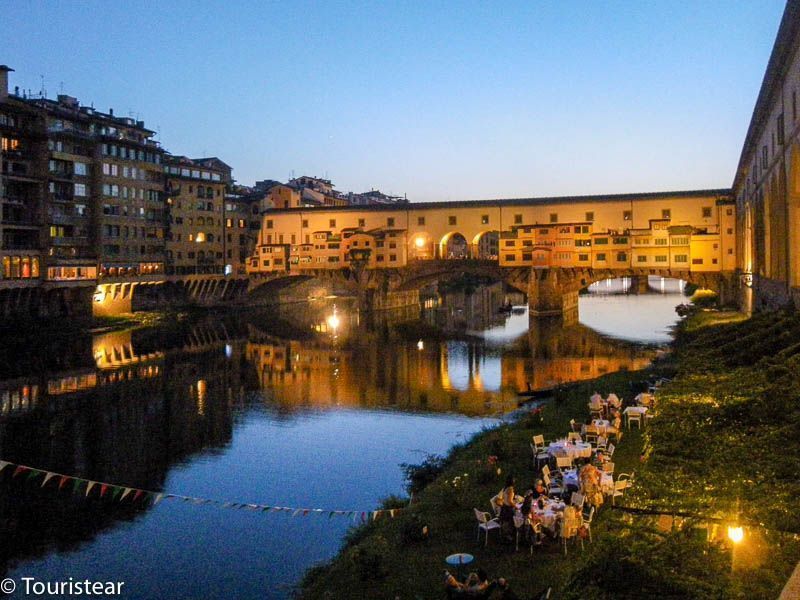
It’s the oldest in town. You have to cross it at least once and enter one of its stores.
Take pictures: The best views of Ponte Vecchio are from Ponte de Santa Trinita.
8. Church of Santo Stefano al Ponte
This temple is from 1116 with a Romanesque facade and is decorated with the typical green and white marble.
9. Portico of the New Market
It is the work of Giovan Battista del Tasso; it was built in 1551 with the function of the sale of objects and fabrics.
In the southern part of the portico, you’ll find the work of Tacca (1612), a bronze boar that stands guard. It is tradition to throw a coin at its fountain; this assures you to return to Florence. ????
Florence and its religious center
10. Visit the Duomo Santa Maria dei Fiore and climb the dome
The construction of Florence Cathedral began in 1296 on the projects of Arnolfo di Cambio in place of the old cathedral Santa Maria Reparata which had become small because of the constant growth of the city of Florence.
Check Out: 3-day Florence Itinerary.
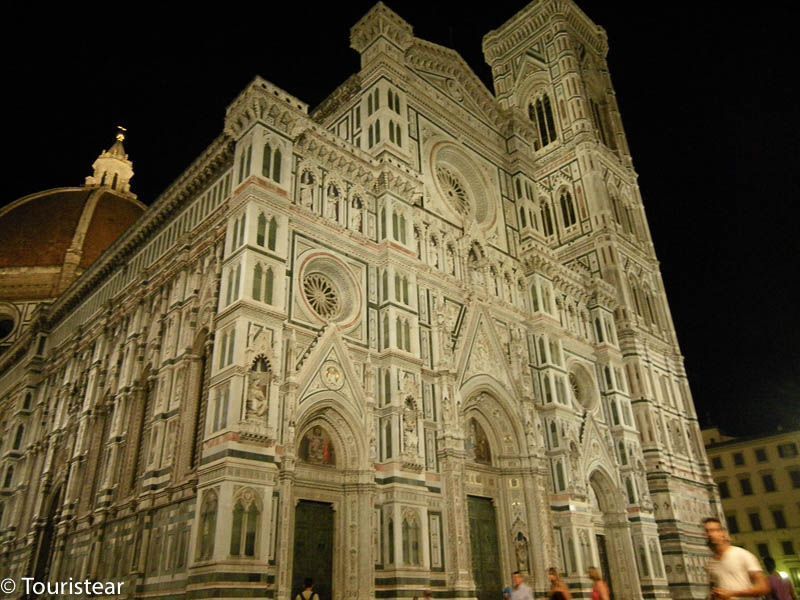
11. Climb the Campanile di Giotto
The bell tower of almost 85 meters, began to be built in 1334 by Giotto. The sculptural decoration is about human civilization and its path to God. The ones we see today are copies.
It is essential to climb its steps and enjoy the views of the city.
12. See the Gate of Paradise at the Battistero
The Battistero is the oldest building in Cathedral Square. Roman remains have been found below, which belonged to a temple dedicated to Mars.
Although what stands out the most is the Gate of Paradise (the one we see outside is a copy, the original is in the cathedral museum).
13. Cathedral Museum
Here, you will find many original works of great value. This is one of the world’s most important museums regarding medieval and Renaissance sculptures.
This is your place if you don’t settle for seeing the copies.
The streets of Dante in Florence
This is a tour of the streets of Dante through the neighborhood where he was born. Some of the works I mentioned here did not exist in their day or were just beginning.
14. The House of Dante
It is a building of the early twentieth century to house the works of the “father of the Italian language.” It exhibits testimonies of the life and work of the Italian poet and is a center of temporary displays of modern art.
15. Palazzo dell’Arte della Lana
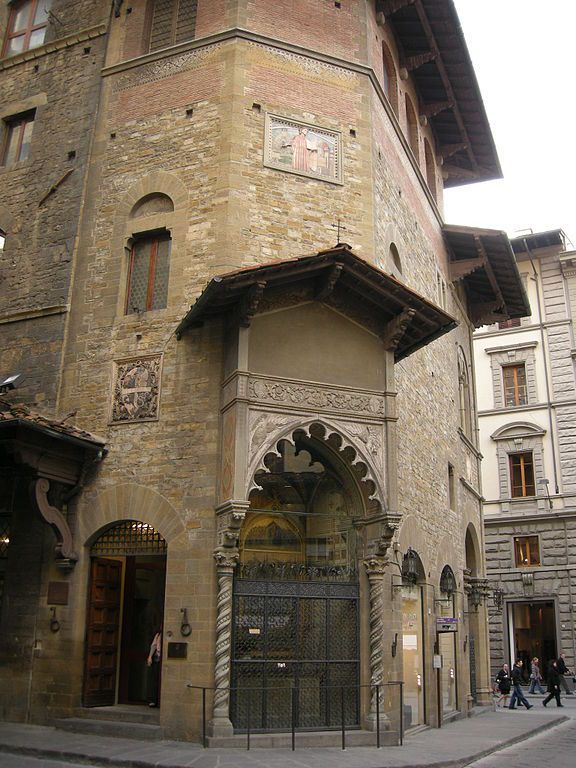
This 14th-century building was originally the residence of the Compiobbesi family. Later the wool guild was bought, and in 1905 it was restored according to the criteria of the time.
16. Church of Orsanmichele
This church has suffered a lot of uses in its years of existence. It was built as a church, and as a cereal market, suffered a fire, its works were entrusted to the Silk Art, but over time the religious function beat the mercantile.
Take a look outside, where you can see your first activity.
17. Visit the Church of San Carlo dei Lombardi (construction 1349 to 1404)
San Carlo dei Lombardi is a Gothic-style Roman Catholic church located on Via Dei Calzaiuoli.
It has undergone many refurbishments over the year, and was originally dedicated to Sant’Anna e Michele, but since the early 17th century became the church of the local Lombard community and was dedicated to St Charles Borromeo.
18. Palazzo San Firenze
In a sober Florentine Baroque style, we can find many works by Florentine artists of the seventeenth and eighteenth centuries.
19. Palazzo del Bargello
It is the second public palace by breadth and importance; it was built in 1255.
In the Bargello Museum, you can find works that tell the history of Tuscany and also Byzantine and medieval marcfiles, French enamels, Michelangelo’s Bahand, among others.
20. Fiorentina Abbey
Fiorentina Abbey was founded in 978, Romanesque in the beginning, and with Gothic forms thanks to Arnolfo di Cambio in 1285. The most striking feature is its hexagonal bell tower and does not miss the works inside.
21 Church of Santa Margherite dei Cerchi
This is where the tomb of Beatrice Poltinari is located, The Love of Dante, and the main cause of his Divine Comedy.
The Florence of the Medicis
22. The neighborhood and the square of San Lorenzo
It was the neighborhood where the Medicis settled. You can follow in their footsteps and get to know some of its main constructions.
In the square is where the San Lorenzo Market takes place, do not miss it.
23. Church of St. Lawrence
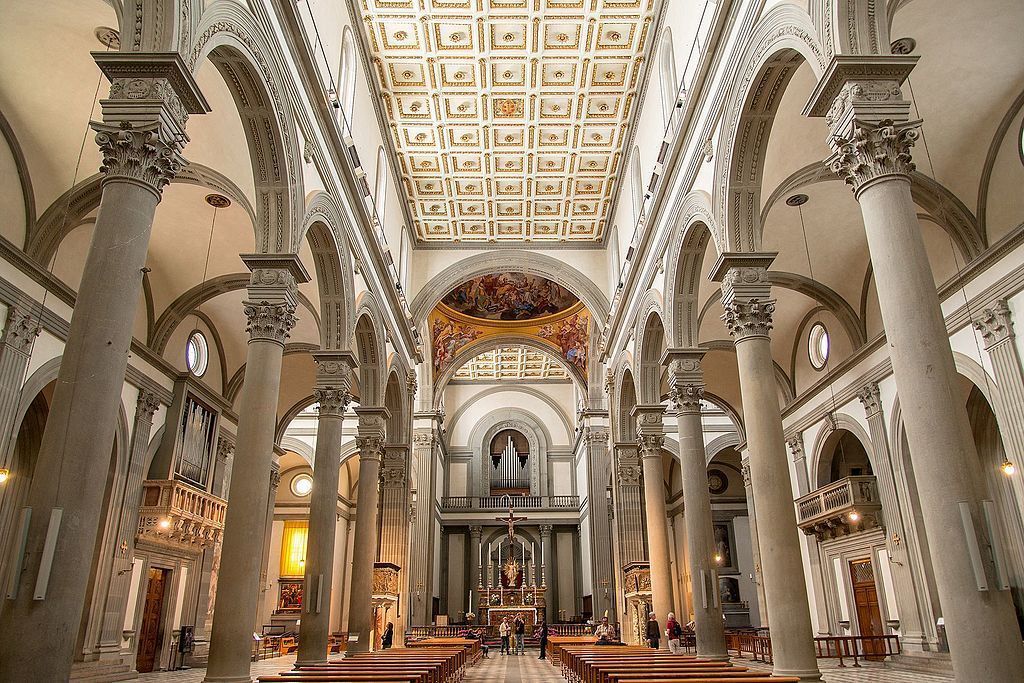
We can see the temple’s facade that has remained unfinished; inside, we can see the arrangement devised by Brunelleschi and modified over time by other Italian artists such as Donatello.
Brunelleschi worked in the old sacristy between 1422 and 1428 and is the architect’s only work that has not been modified.
24. Laurentian Medici Library
Michelangelo was commissioned to create this library to store the Library Heritage of the Medici family.
25. The Medici’s Chapels
In the crypt rest the sovereigns of the dynasties of the Medicis and the Lorena’s. The tombs of Cosme the Elder and Donatello (buried here by admiration that aroused his work).
The Princes’ Chapel is a work of art from the workshops of the Grand Duchy.
26. Palazzo Medici Riccardi
It is one of the main mansions in Florence.
27. Botanical Garden
Set to be built in 1545, it reached its peak in the 18th century by Pier Antonio Micheli, founder of the Florentina botanical society.
In the early twentieth century, it was ceded to the town hall and converted into a public park but was later returned to its function as an original botanical garden. It is also known as “Giardino dei Semplici”.
28. St. Mark’s Church
It was ordered to be built in 1299, but little remains of its original design.
29. Convent and Museum of San Marco
The 15th century is the result of the restructuring of Michelozzo. The museum opened in 1869, and in 1921 all the works in Florence of Fra Beato Angelico were brought to Florence.
The Santa Croce Neighborhood
30. Plaza de Santa Croce
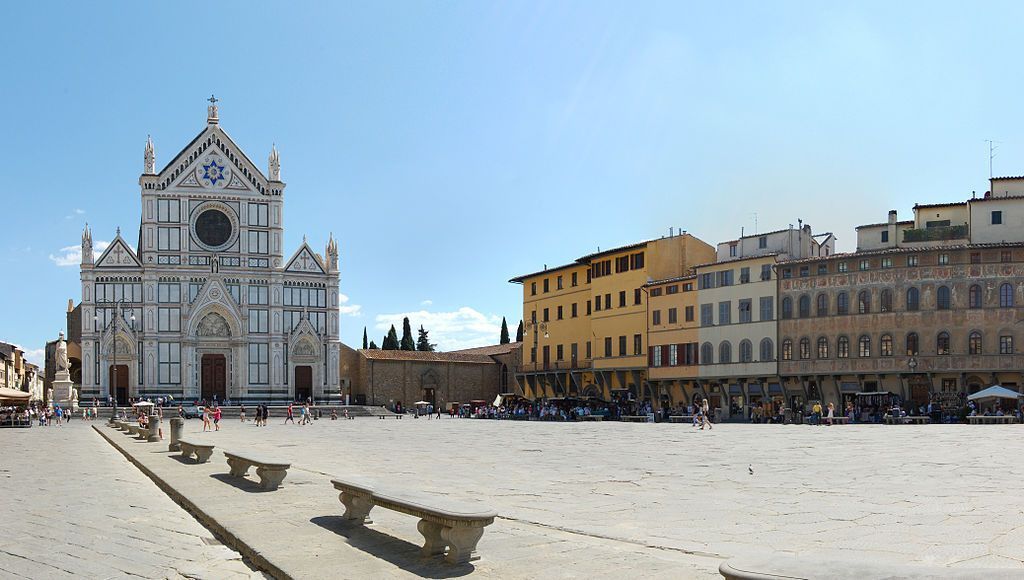
This was a swampy area; can you imagine? So, in 1228, the Franciscans settled here, built a small oratory, and fixed the neighborhood.
The square is from the end of the XIII century, and its design was drawn after the construction of the new church; over time, it became a place of celebrations, parties, meetings, markets, and fairs.
Every year in June, the “Calcio” games are played here. Calcio= football or soccer.
31. Church of Santa Croce
It is definitely a church to visit inside. One of its great monuments is the tomb of Michelangelo. You can also see the tombs of Machiavelli, Galileo Galilei, and other Italian figures.
32. Pazzi Chapel
It was designed and started by Brunelleschi, who directed the works until he died in 1443.
33. Central National Library
Here we will find a copy of everything published in Italy, not that it is especially beautiful. Still, more than 5,000,000 volumes and more than 24,000 manuscripts, incunables, letters, documents, etc.
Following in the footsteps of Brunelleschi and Michelangelo
34. The Gallery dell’Academia
Undoubtedly, an essential visit, we will see the authentic David by Michelangelo and many more works from him and other Florentine and Italian artists.
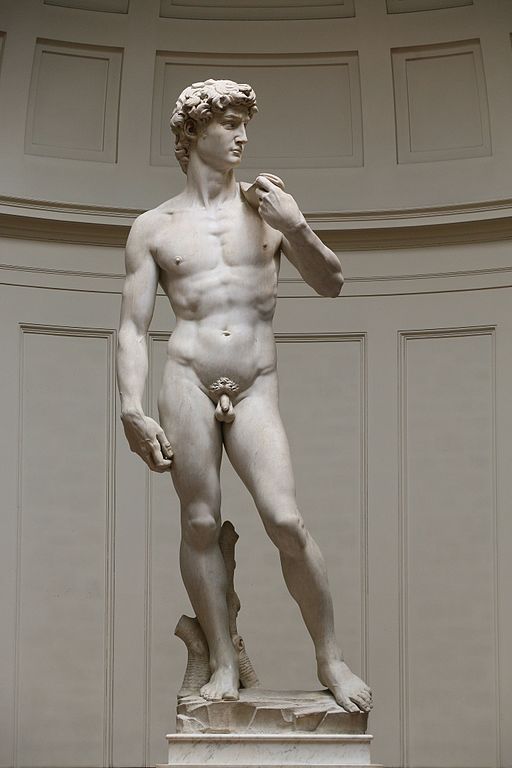
35. Hard stone workshop
Here, we can see ancient and modern works that have been executed, mostly with the Florentine technique of “commeso” of hard stones.
36. Santissima Annunziata Square
Markets were already held here in the 13th century, and in the middle of the fourteenth century, it began to take its Renaissance aspect thanks to the construction of the Hospital of the Innocents.
37. Hospital of the Innocents
The Silk Art Guild commissioned an orphanage to be built in 1419; the manager was Brunelleschi. In this building, we can see the principles of his architecture.
38. Archaeological Museum
This museum holds the most important Etruscan collection in Italy.
39. Casa Buonarroti
It is the union of several buildings belonging to the Buonarroti family in Florence. Among them is the house where Michelangelo lived between 1516 and 1525.
The Strozzi and Rucellai families
40. Palazzo Strozzi
The Palazzo Strozzi is shaped like a cube; construction began in 1489. But they were interrupted forever when in 1538, Giovan Battista Strozzi was taken prisoner by Cosme I.
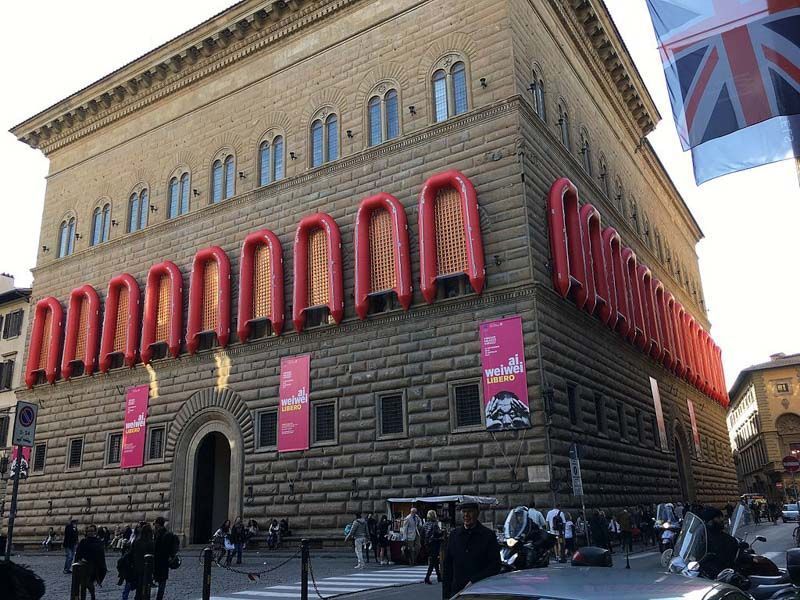
41. Palazzo Antinori
It was the home of the Antinori, silk, and financial traders; today, this family is a great wine producer. There is a wine bar on the ground floor, where you can enjoy the wines of this old family of Florence.
42. Santa Maria Novella Church
This church was consecrated in 1420 but had not been completed. Inside, its chapels stand out, and the artworks are wonderful.
43. Church of San Paolino
This temple was mentioned in 1094. The altar with polychrome marbles attracts attention.
44. Church of St. Pancracio
This temple appears in documents from the ninth century, although in the fifteenth century, it was rebuilt by the monks of Vallombrosa and secularized in the Napoleonic period (1808).
Currently, there are 170 works that were donated by the artist Marino Marini, one of the greatest Italian sculptors of the twentieth century, which are on display.
45. Rucellai Chapel
The chapel of the Rucellai family, also called the Holy Sepulcher, was completed in 1467 by Alberti, the trusted architect of Giovanni Rucellai.
St. Trinita and the Arno
46. Palazzo Davanzati
This stately mansion was built in the mid-14th century. In the mid-16th century, it passed into the hands of the Davanzati family until 1838.
Then, it passed through several hands and had a sorry state of conservation. It is currently owned by the State, is home to the Museum of the Old Florentine House, and is undergoing an intense restoration.
47. Plaza de Santa Trinita
In this square, several interesting buildings and monuments, such as the Palazzo Bartolini-Salimbeni of the early sixteenth century, aroused several critics of its architecture.
The Palazzo Spini-Feroni of the fourteenth century belongs to the Ferragamo mansion today, and here you will find their offices, a boutique, and the Ferragamo museum.
In the center of the square, a granite column of the Caracalla terms (Rome) was donated by Pope Pius IV to Cosme I in 1560.
48. Church of Santa Trinita
The Vallombrosa monks founded it in the second half of the eleventh century, which was outside the walls at that time.
The old Romanesque building was modified, and the church was built on the existing walls, making the tempo taller and longer. The interior is an example of the Tuscan Gothic. Definitely, a gem to visit in Florence.
49. Santa Trinita Bridge
The first bridge was built in 1252 but collapsed several times over the centuries. The bridge you see today is the work of Bartolomeo Ammannati, who was in charge of the project ordered by Cosme I in 1557.
In 1608, the statues of the stations made by different Italian sculptors were added.
On the night of August 3 and 4, 1944, the Germans blew up this bridge, which was rebuilt with the original materials recovered from the Arno River. Only the head of the Spring was missing, which was recovered years later, by chance, by a fisherman.
50. Church of the Holy Apostles
A Latin inscription on the facade ensures that the church was founded by Charlemagne in 805, although the Romanesque building dates back to the eleventh century.
Oltrarno, across the Arno River
51. Santo Spirito Square
This fourteenth-century style square has a daily fruit, vegetable, and clothing fair. Highlights: include the Palazzo Guadagni of 1505 and the church of Santo Spirito.
52. Church of Santo Spirito
In 1250, Augustinian monks settled in this area and began the construction of a convent.
Brunelleschi was commissioned to rebuild the complex but could not begin until 1444 because he was taking over the cathedral’s dome.
Brunelleschi died two years later, and the work was commissioned to one of his disciples, Antonio Manetti Ciaccheri.
Brunelleschi’s project underwent several changes; now, we see it with a simple facade and an interior that deserves a visit.
53. Palazzo Pitti
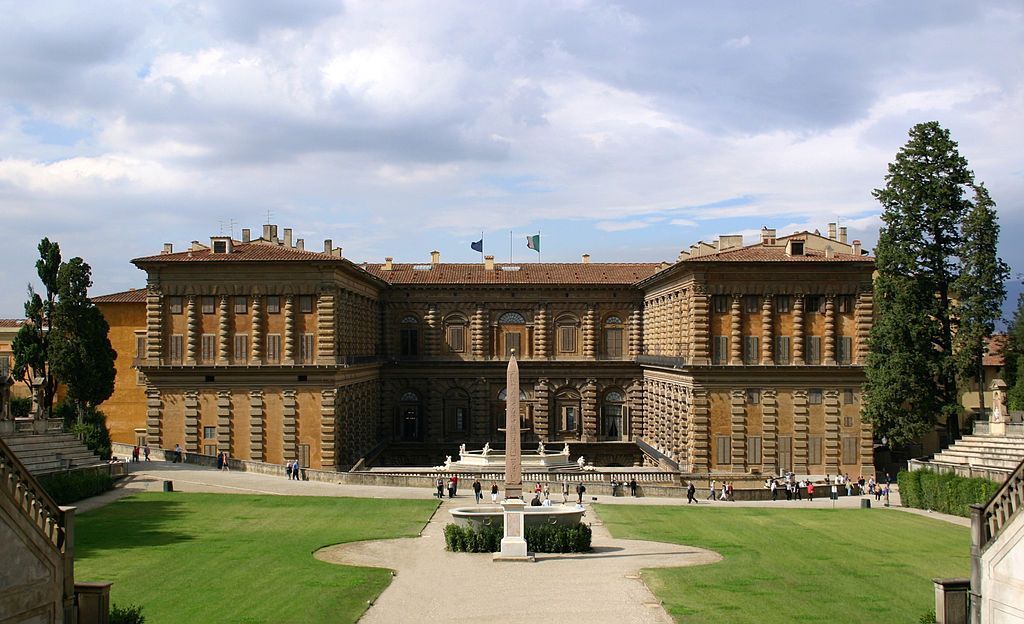
This magnificent palace was built by Luca Pitti (mid-15th century), a family of wealthy merchants, bankers, and staunch rivals of the Medici. When Cosme I rejects Brunelleschi’s project for his palace, Luca Pitti is contracted to build it.
Pitti Palace has had different guests, such as Elisa Baiocchi, the sister of Emperor Napoleon and Grand Duchess of the kingdom of Etruria (1808-1814).
This palace has undergone many modifications over the years, but it remains an impressive ensemble and a must-visit in Florence.
54. Palatine Gallery
Here, you can see the collection of paintings that the Grand Duke Cosme II had, it is on the left-wing of the first floor, and you can see Raphael, Tiziano, Guercino, and others. There are many interesting rooms; I love the room of statues.
55. Gallery of Modern Art
It is located on the second floor of Pitti Palace, and here you can see works of art in 30 rooms. The works are exhibited chronologically from the time of Peter Leopold until the first world war.
56. Silver museum
The Medici’s treasure is kept almost intact in Florence’s Silver Museum.
57. Visit the Boboli Gardens
These impressive gardens were designed after Cosme I bought Palazzo Pitti. The garden has a triangular shape and several slopes; visiting them is a must in Florence.
58. Church of San Felice in Piazza
It is a small church with the Romanesque style of 1066. Although it underwent a few restructurings in the fourteenth century, in the fifteenth and sixteenth, the facade is attributed to Michelozzo.
Inside, we can clearly see the stages of construction of the temple.
59. Borgo San Jacopo
Borgo San Jacopo is one of the oldest streets of “Oltrarno,” corresponding to the first stretch of the Via Pisana.
Many buildings were destroyed during the war; some have been saved, and others have been rebuilt—definitely, a place with many historical and charming corners to walk around.
Let’s tour the hills of Florence
60. Church of San Leonardo in Arcetri
It is a church of rural origin from the eleventh century, although it has undergone great restorations in the late nineteenth century. The marble pulpit stands out.
61. Church of San Miniato al Monte
This church has very remote origins; in the act of donating to Charlemagne, it is documented that in 783, there was a place of worship dedicated to Miniato.
Bishop Hildebrando said he had found the saint’s remains and renovated the temple and monastery; it is believed that the works began in 1018 and ended in 1207 by the inscription on the church’s pavement.
Undoubtedly, the florentine Romanesque facade stands out with the typical white and green marbles. And the interior is not left behind with magnificent works of art.
62. The Monastery and the Monumental Cemetery
This was the burial place of the nobility, the high bourgeoisie, and representatives of Florentine culture, for example, the writer Carlo Collodi, creator of the immortal Pinocchio.
63. Piazzale Michelangelo
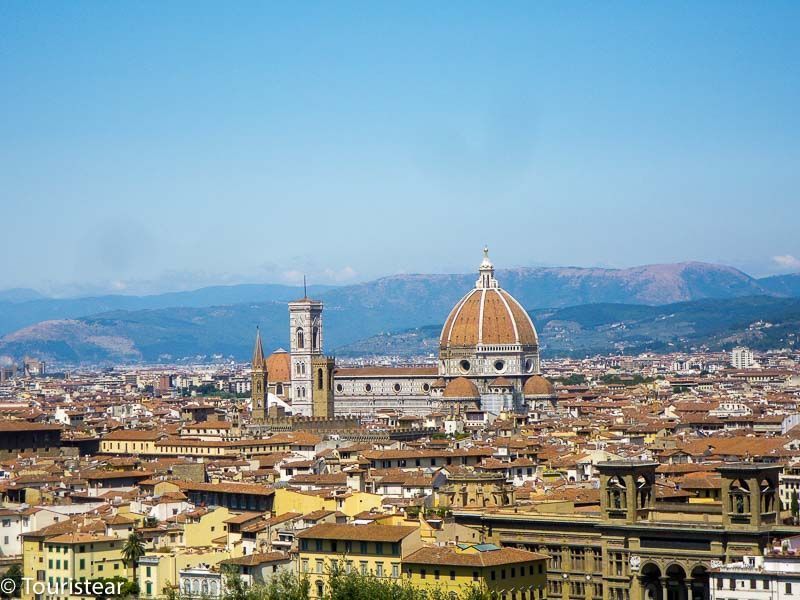
This magnificent esplanade is from 1875; Giuseppe Poggi performed this work to pay homage to Michelangelo. In the center of the esplanade, we can see a replica of David and on the pedestal copies of the statues of the New Sacristy.
From here you can enjoy the best views and sunsets of Florence.
64. Church St. Niccolo Oltrarno
This church was founded in the 12th century and underwent several modifications throughout its history.
One of the legends of this church tells that Michelangelo took refuge here in 1530, for fear of reprisals of the Medici, as a result of their participation in defense of the city encircled by the troops of Charles V, the emperor who returned the domain of Florence to this powerful family.
Gastronomy in Florence
65. Tuscan Cooking Class and Lunch
What better way to know the destination than for its gastronomy? When you return home, you can take a Tuscan cooking course in Florence and enjoy its gastronomy.
66. Eat a pizza (or several)
Italy is the country of pizza, and in Florence, you will find excellent offers of this Italian delicacy. So take pizza at stalls, ask for portions, and stroll around the city while you eat a pizza!
- Check Out: Florence Food Tour
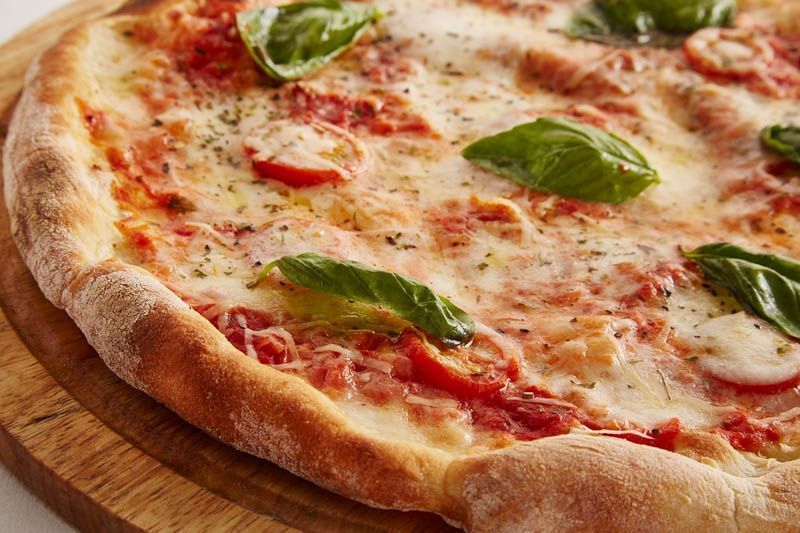
67. You can have an ice cream while touring the city
Ice cream (gelato) is another thing you have to taste in Florence; they are great!!!
68. Try the famous Chianti wine
In Tuscany, they produce a wine called Chianti. Take a tour of this area and taste its wines.
69. Oltrarno Dinner one of the best steaks
There is excellent gastronomy in Florence, one of the star dishes is bistecca, you cannot leave Florence without trying this dish.
Some restaurants prepare it beautifully well in the area of Oltrarno, that is, on the other side of the Arno.
70. Visit the Central Market and try typical Italian products
Visit the markets of Florence to try the typical Italian products. The central market, I’m sure you’ll love it!
71. Take the aperitif in Florence
Having the aperitif in Florence is something every traveler has to do. But look, that aperitif is taken in the afternoon!!!
Tours from Florence (Side Trips)
72. Pisa, Siena and San Gimignano day-Trip
- Pisa, Siena and San Gimignano day-Trip from Florence
73. Go to Chianti and have a tasting of its wines; you cannot miss the Brunello di Montalcino
74. Go picnic to Fiesole and enjoy the sunset
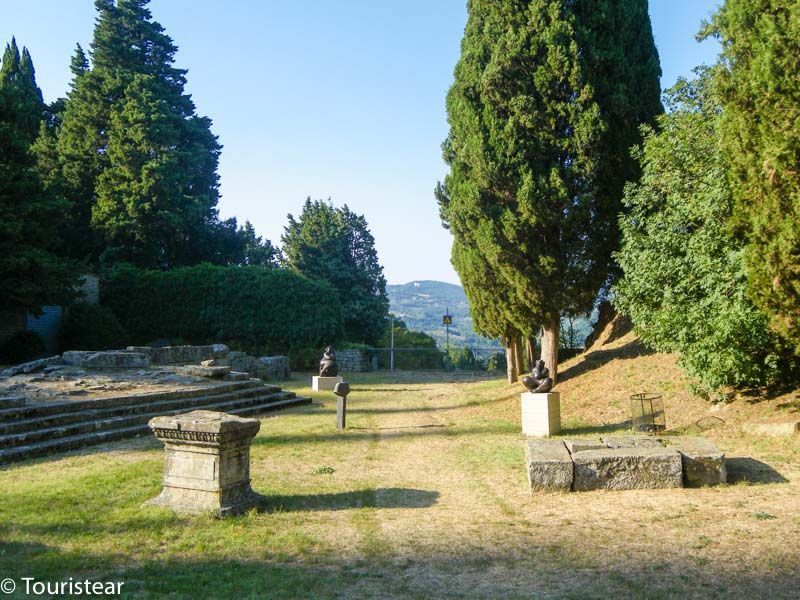
75. Save a Day to Get to Visit Cinque Terre
Where To Stay in Florence
Florence is a straightforward city to know on foot, so it is best to stay in a central area to be able to go everywhere walking.
Check out the Booking website to see hotel prices on your travel date.
As you can see, Florence is an open-air museum full of art wherever you look. So visit it calmly and try to avoid traveling in August, which is full of cruisers.
Save this image on your Pinterest
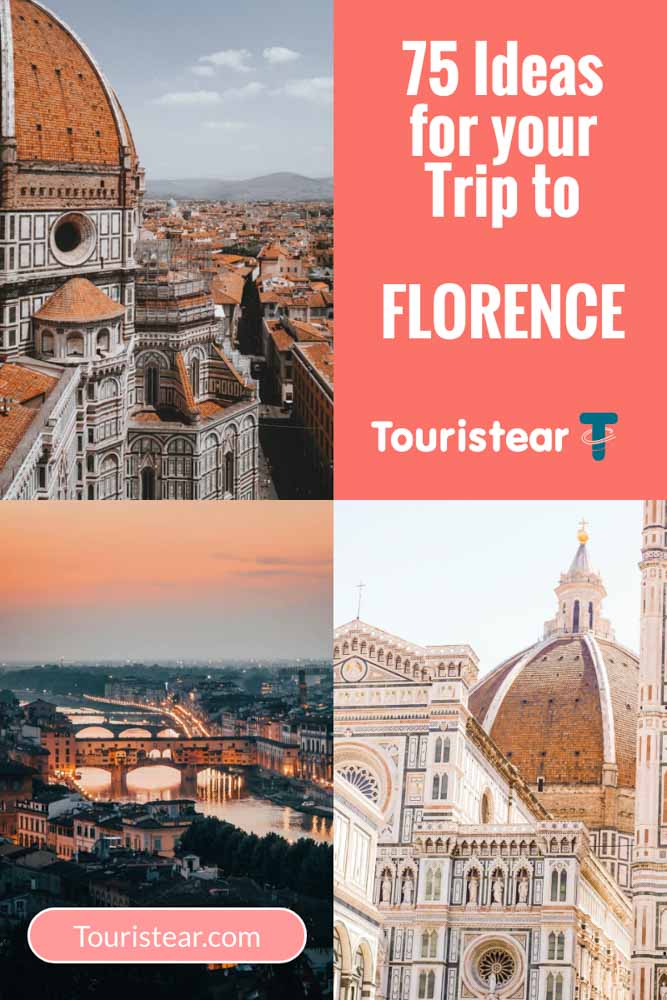
Last Updated on 9 October, 2023 by Veronica
Disclosure: Some of the links on this post are affiliate links, meaning at no additional cost to you, I may earn a small commission if you click through and make a purchase.
Author: Veronica
Vero, a seasoned traveler, has explored 25 countries and lived in five, gaining a rich perspective and fostering an infectious passion for travel. With a heart full of wanderlust, Vero uncovers the world’s hidden gems and shares insights, tips, and planning advice to inspire and assist fellow adventurers. Join Vero and let the shared passion for travel create unforgettable memories.
